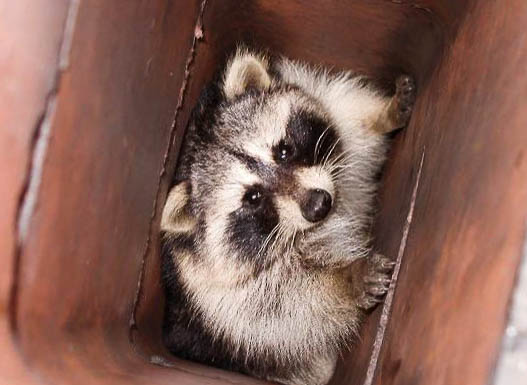About Groundhogs
Appearance
The groundhog is a lowland animal that belongs to the same family as ground squirrels. They are sometimes called woodchucks, ground pigs, or Canada marmot. They are one of the 14 species of marmots and the largest of the squirrel family.
Groundhogs are short animals, with lengths between 40 and 70 cm (16.4 to 27 in.). They have short tails (compared to other rodents) of 9.5 to 18.7cm (3.7 to 7.4 in). Adult groundhogs can weigh between 2 and 6.3 kg (4.4 and 13.9 lb.).
Groundhogs have mousy faces, with four ivory-white incisor teeth that grow 1.5mm every week. They have short and powerful limbs with thick curved claws that aid them in digging. They usually have brown/gray short furs all over their body to help them keep warm in cold weather. They can keep increasing their weight for their first two years. When on hind feet, groundhogs resemble small bears.

Behavior
Most groundhogs are asocial animals; they are mostly territorial and only come together during hibernation. They can be very aggressive when it comes to dominance over a particular region. They can create amazing burrows and networks through the soil, difficult for predators to penetrate. They are diurnal (active in the early morning or late afternoon).
When outside their burrows, groundhogs are alert, and on sensing danger, they will let out a loud whistle to warn the rest of the group. For their stocky nature, groundhogs are good swimmers and fierce climbers. They do this to escape from predators.
Groundhogs are mostly herbivores but sometimes kill and eat grasshoppers, insects, baby birds, snails, and other smaller insects. Their primary (green) diet consists of wild grasses, buttercup, lettuce, berries, clover, and many others. Their ever-growing teeth give them the flexibility of diet.
During autumn, groundhogs can eat over 1 pound of vegetation in a day and increase their weight by 100% as they prepare for winter/hibernation. If cornered in their burrows, groundhogs will fight to the death with their claws and teeth. When fighting, injured, or cornered by a predator, they let out squeals.
Habitat
Groundhogs prefer to live in open woodlands and lowland forests where they can feed on wild animals. They are native to North American countries from Canada down to the southern United States. Groundhogs dig burrows that can be as deep as 6ft (1.8m), and 20 feet (6m) wide. These sub-surface homes usually have multiple entrances that make it easier for them to escape an invasion. They will not hesitate to travel to nearby human settlements in search of food and warmth.
Life Cycle
Post hibernation, males will come out early of their burrows to scout for a possible mate. By early March, when food is plentiful, breeding begins. Female groundhogs will give birth to about 2 to 6 young per litter after a gestation period of 32 days. The babies are hairless and blind. They mature within three months of birth.
The groundhogs then hibernate with their children and feed them in preparation for next winter. Barring disease, extreme cold, or predator attacks, groundhogs can live for about 6 years in the wild. But in captivity, they can live for 9 to 14 years.
Groundhogs are low on the food chain and suffer predation from snakes, coyotes, badgers, bobcats, foxes, minks, cats, hawks, and more. Groundhogs can also suffer and die from parasitism and bacteria.

Damages They Cause
If you live in a lowlands region near the forest, then you may be regularly visited by these rodents
Destruction to utilities
Groundhogs can chew continuously on wires and other utility cables till they get irreparably damaged. Replacing these utilities can cost a lot.
Affect your building structure
Their burrowing and underground activities can lead to them creating tunnels that lead to the foundation of your house. Water can flow through this tunnel to compromise the structural integrity or lead to drainage problems.
Groundhogs will destroy your orchards and plants
Their search for foods can see them gnaw at plant leaves, roots, and seeds. Their burrowings also kill plants on your property.
Destruction to your lawns and home exterior
Groundhogs on your lawns can burrow large holes. These holes are repulsive and detrimental to your lawn. They can also chew on existing surfaces outside the home like wood, pipes, and other utilities.
They can attack humans and pets
Groundhogs can carry many parasites like fleas and ticks. They also can carry rabies. It makes their bite dangerous to both humans and pets.













